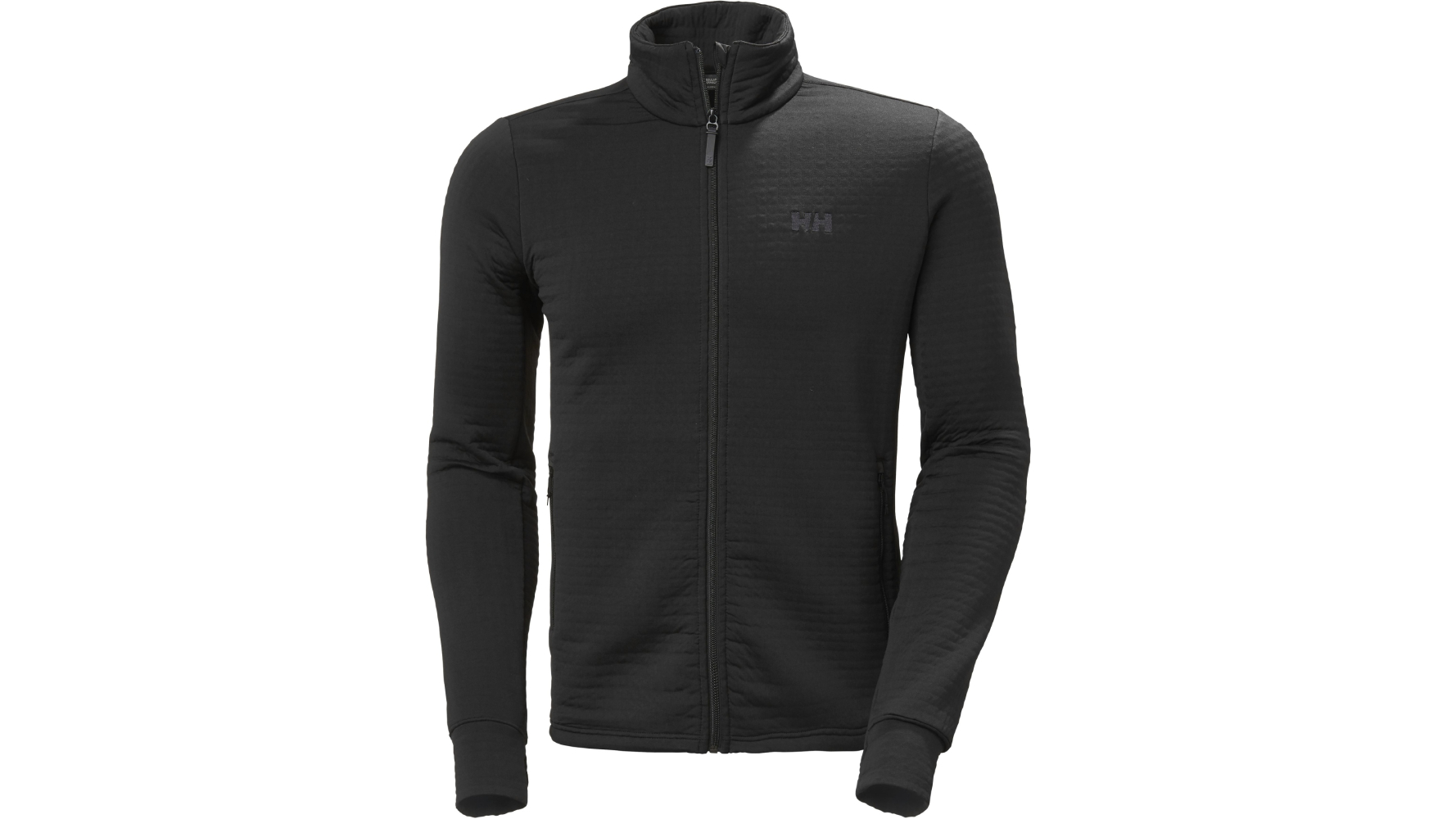Advnture Verdict
While the overall performance of the Helly Hansen Power Air Heat Grid jacket is solid rather than exceptional, its eco credentials are unsurpassed – and maybe that should be the driving factor for outdoor consumers. As microplastic pollution moves higher up the environmental agenda, the days of fibre-shedding synthetic fleece ought to be numbered, and Polartec’s Power Air fabric fleece top shows us a way forward.
Pros
- +
Innovative fabric that greatly reduces microfibre shedding
- +
Warm and breathable
- +
Useful thumb loops
Cons
- -
Not class-leading warmth for weight
- -
Not the softest feeling fabric
- -
Expensive
You can trust Advnture
First impressions
Ostensibly, the Helly Hansen Power Air Heat Grid jacket is a midlayer fleece, but actually, it’s far more than that. It’s a piece that makes us question what, how and why we buy outdoor gear, and whether we’ve got our priorities right. For years, the outdoor industry has focused on pure performance for pinnacle users. In the case of insulating mid layers, that has meant searching for the best possible warmth for weight or ever-increasing breathability and improved moisture management.
Why? Because elite climbers and other outdoor athletes want to stay warm and dry in order to perform at their best in challenging conditions. Of course, the same applies to your general hiker or hillwalker, even if their adventures are rather more modest. Generally, that has meant creating new types of fabrics – but almost all of them have been based on man-made fibres derived from petrochemicals, which have now been shown to shed harmful microscopic plastic filaments into the environment. This happens whenever you wear your cosy fleece, which is concerning for a garment designed to be taken into outdoor landscapes. But it is particularly exacerbated by the washing process.
- Explore all the best fleece jackets in our buying guide
- Discover why layering is important with this advice
- What is a mid layer? We explain in this quick guide
Wastewater from your washing machine eventually ends up in our rivers, seas and oceans, and those microplastics are often still present, since filtration and treatment systems mostly only deal with organic matter. And ultimately, nobody wants the clothes they wear to harm the planet. The performance benefits of synthetics aren’t worth the environmental cost. Put simply, that’s the bottom line, and maybe that is the way that outdoor users – kit reviewers and kit buyers – must start to think. It will require a change of mindset and an adjustment of expectations, but in the end, if a fleece keeps you warm enough not to get hypothermia and is better for the planet, isn’t that more important than a fleece that performs better but is far more damaging?
• RRP: $200 (US) / £150 (UK) / €170 (EU)
• Fabric: Polartec Power Air (89% recycled polyester, 11% elastane)
• Sizes: Men's: S–XXL; Women's: XS–XL
• Weight (men’s size L): 601g/21.16oz
• Colours: Men’s: Black; Women’s Cream / Black
In the field
Tipping the scales at 600g, the Helly Hansen Power Air Heat Grid is a fleece that, in weight terms, sits up there with heavy pile and shearling-type jackets. But, although it is still a warm jacket, it doesn’t offer quite the same degree of warmth as those heavyweight fabrics. What it does, however, is greatly reduce the problem of microfibre pollution. To achieve this, the polyester fibres are encapsulated within pockets. It’s similar in some senses to the way that down jackets are constructed, with baffles to hold the down clusters in place. And just like a down jacket, Power Air fabric relies on trapping air to generate warmth.
It works, but the cost is a little added weight. The benefit is that, since the loose polyester fibres are trapped in a tightly woven outer, there is up to 80% less microplastic release when wearing or washing the jacket. You’ll appreciate this if you don’t like fleeces that leave fuzz all over your other clothes too, because that is exactly the problem that Power Air is designed to overcome. The face fabric has been similarly developed with durability in mind, resisting pilling or bobbling and extending the lifetime of the garment.
You’ll be pleased to hear that this is also a good jacket in terms of overall design fit and construction. It has the ideal semi-tailored fit – not too tight, not too baggy – with zipped hand pockets and thumb loops at the cuffs. A little stretch in the fabric ensures pleasant everyday comfort, and there’s plenty of length in the arms and torso for ample coverage. The hem is perhaps a little baggy, as it has no adjustment or elastication, but otherwise there’s really nothing to fault – though the cost might put some buyers off.
Lastly, the fabric is made from recycled polyester, strengthening its eco credentials. So, if you are mindful of the impact of synthetics, but appreciate their performance, this is a top choice. It is a fraction heavier than most other fleece jackets of similar warmth, but that’s a small price to pay for a greener garment, isn’t it?
All the latest inspiration, tips and guides to help you plan your next Advnture!
An outdoors writer and editor, Matt Jones has been testing kit in the field for nearly a decade. Having worked for both the Ramblers and the Scouts, he knows one or two things about walking and camping, and loves all things adventure, particularly long-distance backpacking, wild camping and climbing mountains – especially in Wales. He’s based in Snowdonia and last year thru-hiked the Cambrian Way, which runs for 298 miles from Cardiff to Conwy, with a total ascent of 73,700 feet – that’s nearly 2½ times the height of Everest. Follow Matt on Instagram and Twitter.


